Introduction
West Indian-almond is a 30 to 55-foot-tall, deciduous tree which forms a symmetrical, upright silhouette in youth with horizontal branches reaching 50 feet in width at maturity. The branches are arranged in obvious tiers, giving the tree a pagoda-like shape. As the tree grows older, the crown spreads and flattens on the top to form a wide-spreading vase shape. The large, 15-inch-long and six-inch-wide, shiny dark green, leathery leaves change to beautiful shades of red, yellow, and purple before dropping in winter. Due to their large size, these old leaves may be considered a nuisance to some people. The leaves are quickly replaced by new growth, so the tree is bare for only a short period of time. The inconspicuous, greenish-white, springtime blossoms appear in six-inch-long terminal clusters and are followed by the edible fruits. These drupes are 2 to 3-inches long and mature from green to yellow or red, or brown during the summer. The outside husk is corky fiber with an inner thin green flesh. The inside holds the edible, almond-like kernel. The fruit is high in tannic acid and this could stain cars, pavement and sidewalks. It also causes significant litter on the ground.
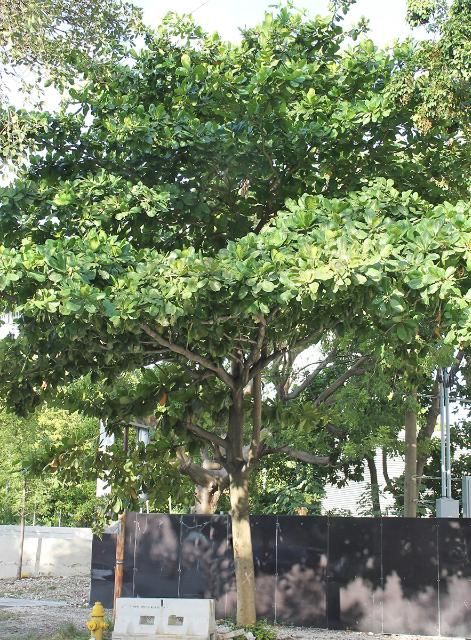
General Information
Scientific name: Terminalia catappa
Pronunciation: ter-mih-NAIL-ee-uh kuh-TAP-uh
Common name(s): West Indian-almond, sea-almond, tropical-almond, India-almond
Family: Combretaceae
USDA hardiness zones: 10B through 11 (Figure 2)
Origin: native to Asia
UF/IFAS Invasive Assessment Status: Caution, may be recommended but manage to prevent escape (South); Not considered a problem species at this time, may be recommended (North and Central)
Uses: shade; highway median; specimen; street without sidewalk; parking lot island < 100 sq ft; parking lot island 100–200 sq ft; parking lot island > 200 sq ft
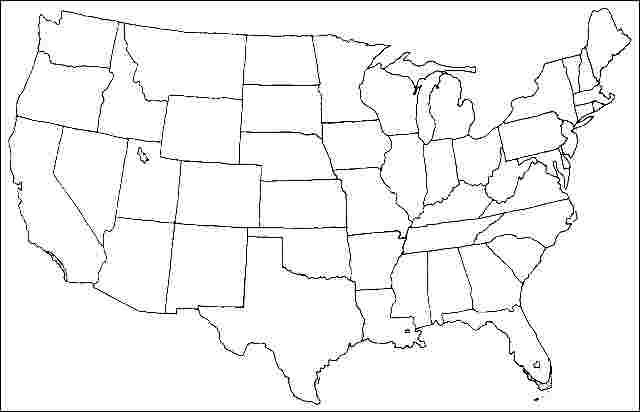
Description
Height: 30 to 55 feet
Spread: 30 to 50 feet
Crown uniformity: symmetrical
Crown shape: pyramidal, spreading
Crown density: moderate
Growth rate: moderate
Texture: coarse
Foliage
Leaf arrangement: alternate
Leaf type: simple
Leaf margin: entire
Leaf shape: broadly obovate
Leaf venation: brachidodrome, pinnate
Leaf type and persistence: deciduous
Leaf blade length: 4 to 15 inches
Leaf color: dark green and shiny on top, paler green underneath
Fall color: red, yellow, or purple
Fall characteristic: showy
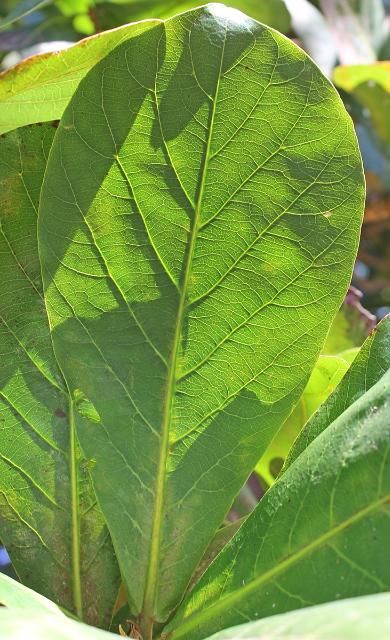
Flower
Flower color: pale green or white
Flower characteristics: not showy; star-shaped; emerges in terminal clusters on 2"–6" long racemes
Flowering: summer and fall
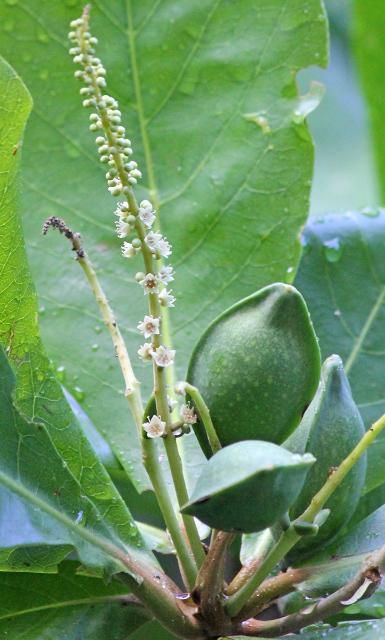
Fruit
Fruit shape: elliptic
Fruit length: 2 to 3 inches
Fruit covering: firm but fleshy drupe
Fruit color: turns from green to red, yellow, or brown when ripe
Fruit characteristics: does not attract wildlife; not showy; fruit/leaves a litter problem
Fruiting: summer
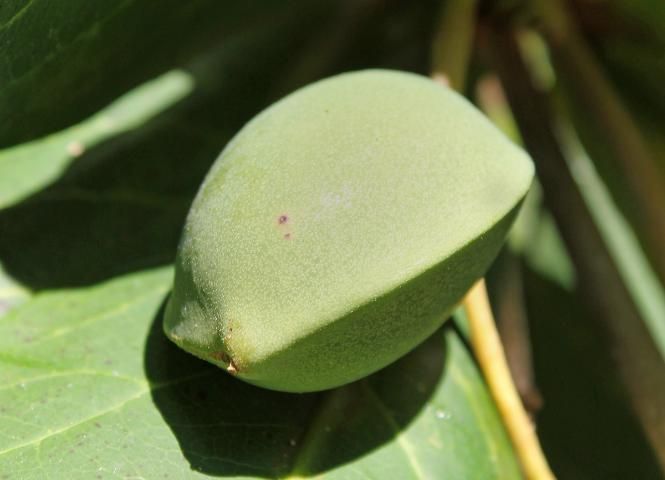
Trunk and Branches
Trunk/branches: branches droop; not showy; typically multi-trunked; no thorns
Bark: gray and smooth, becoming fissured with age
Pruning requirement: needed for strong structure
Breakage: susceptible to breakage
Current year twig color: green, brown
Current year twig thickness: thick, very thick
Wood specific gravity: unknown

Credit: Gitta Hasing
Culture
Light requirement: full sun
Soil tolerances: clay; sand; loam; alkaline; acidic; well-drained
Drought tolerance: high
Aerosol salt tolerance: high
Other
Roots: can form large surface roots
Winter interest: yes
Outstanding tree: no
Ozone sensitivity: unknown
Verticillium wilt susceptibility: unknown
Pest resistance: resistant to pests/diseases
Use and Management
The tree may be best suited for planting along the coast as a park or shade tree providing dense shade. People may object to the large leaves and the fruit that falls from the tree if the tree is used as a street tree, and the tannic acid may be a problem near parked cars. Branches droop and require regular maintenance to keep them pruned to allow for vehicle clearance beneath the canopy. However, it would make a nice tree for a median or along a boulevard where this would cause less of a nuisance.
West Indian-almond should be grown in full sun on any well-drained soil. Plants are quite tolerant of wind, salt, and drought but do need protection from freezing temperatures. Trees perform best if mulched and regularly fertilized.
Propagation is by seed.
Pests
Thrips are a pest of this tree.
Diseases
Leaf spot disease is a problem with this tree.
Reference
Koeser, A.K., Friedman, M.H., Hasing, G., Finley, H., Schelb, J. 2017. Trees: South Florida and the Keys. Gainesville: University of Florida Institute of Food and Agricultural Sciences.